The heart of a chestnut covered in an irresistible sugar shell: these are marron glacé, a real joy for the eyes and for the taste-buds, loved by young and old alike.
Perfect for special occasions like Christmas holidays, marron glacé can be savored on their own or combined with other tasty preparations.
In this post we will reveal some little-known facts about this delicacy and we will show you how to make a mouth-watering dessert based on coffee and mousse: the shot glass of marron glacé.
What are marron glacé?
Before we look at how to prepare the shot glass sweet, let’s discover a little more about marron glacé. What are they exactly, and how are they made? Marron glacé are basically candied chestnuts, covered in a sugar glaze which gives them a shiny and inviting look.
The name itself derives from that particular characteristic. In fact, in French “glacé” means “iced” and refers to the glazing process which gives these sweets their crystallized glassy-look surface.
This particular confectionery treatment does not require many ingredients. There are essentially only three basic components: sugar, water and the marrons, a high quality variety of chestnuts which differ from other types in various ways.
Chestnuts are the fruit of a wild plant, whereas marrons are from a cultivated tree. As far as the look is concerned, marrons are larger and rounder in shape, they have a lighter colored skin and inside the outer shell there are a maximum of three fruits.
From a flavor point of view, though, the most important distinction is in the taste. In comparison to chestnuts, in fact, marrons are crunchier, more flavorsome and sweet.
A brief history of marron glacé
Did you know that the story of how this sweet came about has always been the cause of much debate?
Indeed it is not so clear who invented the recipe, and fighting for credit on this matter are France and Piedmont.
The Italian version attributes the birth of marron glacé to the area around Cuneo, still today one of the most famous areas for production of chestnuts in the whole of Italy.
It was a chef in the court of the Duke of Savoia, Carlo Emanuele I who came up with the idea.
The French, on the other hand, say it was the famous chef Francois Pierre de La Varenne, of 17th century Nouvelle Cuisine, who spoke of marron glacé in his book “Le parfait Confiturier”.
It was, however around the end of the 18th century in France that the first ever company started industrial production of marron glacé.
How are marron glace made?
There may be few ingredients, but the method is long and delicate.
The recipe for making marron glacé is a complex one, which actually requires several days to complete and a certain amount of care and attention so that the fruits are not broken.
But what is the recipe exactly?
The chestnuts are first soaked in water for 9 days, then they are peeled and boiled. After that, they are candied and in this phase, which lasts several days, the fruits absorb the sugar and release water.
Once they have been candied, there is then the phase of glazing using icing sugar and water, a procedure which is completed in the oven which helps crystallization.
The recipe for the shot glass of Marron Glacé
Marron glacé are a real Christmas classic.
Their sweet flavor is also perfect for enriching preparations like the one we are suggesting today, an irresistible indulgence to be savored from beginning to end.
You only need a few ingredients to make this tempting delight, a little culinary treat which brings together the intensity of gianduja and coffee and pairs it with the delicateness of mousse flavored with marron glacé.
All of this is then served in a small glass so that the drinker can first savor the sight of this beautiful drink before tasting it.
Let’s take a look at which ingredients and equipment you need and the procedure for making this sweet temptation.
Ingredients:
- 0.71 oz of gianduja flavored topping
- 0.25 oz Filicori Zecchini coffee powder
- 1.06 oz of mousse flavored with marron glacé
- Cocoa powder
- 1 piece of marron glacé
Equipment:
- Glass
- 17, 64 oz siphon
- Cocoa powder shaker
Procedure:
- Put a layer of gianduja topping directly into the serving glass.
- Prepare the espresso directly in the glass, adding it to the topping.
- Whip up the marron glacé mousse using the siphon and ease it delicately onto the surface of the drink.
- Finish off by decorating with a light dusting of cocoa powder, a small piece of marron glacé in the centre and serve.
As you have seen, it doesn’t take much to serve your coffee with something a little different and a touch of originality, with an appetizing delight.
If the shot glass of marron glacé and its recipe have sparked your curiosity , choose your favorite Filicori Zecchini blend and try this little taste explosion.
 Europe
Europe



